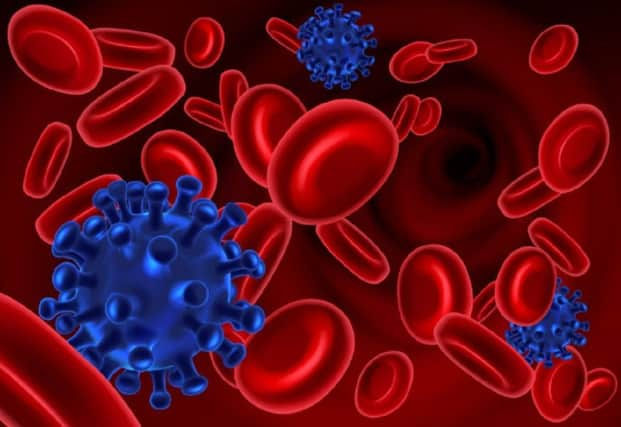Deadly superbug fuelled by food additive in cakes, juices and jams


The study shows that the sugar – known as trehalose – is metabolised by the potentially deadly bacterium Clostridium difficile.
It suggests the common ingredient has helped trigger epidemics across the world. Trehalose is also used in dried and frozen foods, nutrition bars, fruit fillings, instant noodles and rice and white chocolate. It occurs naturally in small amounts in mushrooms, honey and seafood. In recent years the UK, Europe and the US have seen a sharp increase in hyper-virulent strains that cause severe disease.
Advertisement
Hide AdAdvertisement
Hide AdSymptoms include diarrhea, fever, loss of appetite, nausea and abdominal pain. But the factors contributing to their emergence have been unclear – until now.
Contributing to hypervirulence
The study found two genetically distinct C. diff strains that have caused epidemics – known as RT027 and RT078 -have independently acquired unique mechanisms to break down low concentrations of trehalose.
Importantly it also showed this ability to metabolise the sugar was linked with disease severity in mice with a humanised form of C diff. Bacterial strains can be analysed through differences in bits of DNA called ribosomal RNA – and assigned to particular ‘ribotypes’.
Professor Robert Britton and colleagues used whole-genome sequencing and comparative analysis to discover the link. It identifies the C diff strains and the widespread adoption and use of trehalose as a sugar additive in the human diet, and suggest that a harmless food additive may inadvertently select for pathogens.
Advertisement
Hide AdAdvertisement
Hide AdProf Britton, of Baylor College of Medicine in Houston, said: “Clostridium difficile disease has recently increased to become a dominant pathogen in North America and Europe, although little is known about what has driven this emergence.
“Here we show that two epidemic ribotypes (RT027 and RT078) have acquired unique mechanisms to metabolise low concentrations of the disaccharide trehalose.”
The study, published in the journal Nature, found RT027 strains contain a single mutation in the trehalose that increases its sensitivity to trehalose by more than 500-fold. Prof Britton said: “Furthermore, dietary trehalose increases the virulence of a RT027 strain in a mouse model of infection.”
Meanwhile RT078 strains acquired a cluster of four genes involved in trehalose metabolism. Prof Britton said: “We propose that the implementation of trehalose as a food additive into the human diet, shortly before the emergence of these two epidemic lineages, helped select for their emergence and contributed to hypervirulence.”
Advertisement
Hide Ad